
Our first City LEAP Summit in 2020 addressed the needs and challenges faced by local councils (Pihak Berkuasa Tempatan, PBT) in implementing smart cities. At the time, there were many. However, living through an unprecedented pandemic in the following two years resulted in the introduction and 180-degree evolution of these challenges.
In this year’s City LEAP Summit, we readdress the PBT challenges and reorient our efforts. Our renewed vision and clearer pathways helps us forge forward to make the smart city aspirations a reality with every PBT and its people.
In line with the Ministry of Housing and Local Government (KPKT)’s initiative in creating a “Liveable Malaysia”, TM One is committed to pioneering and co-creating digital transformation for the cities of the future. Championing a Liveable Malaysia through the creation of smart cities is very much aligned with our goal of becoming a human-centred technology company and our belief in “Life Made Easier”.
The advent of smart cities will help create a higher quality of life for citizens by using technology to support local business communities, thereby increasing the efficiency of public services and creating a more sustainable, friendlier environment.
The implementation of an effective smart city transformation is easier said than done. Challenges await each PBT with many moving parts and considerations to be made. However, in our endeavours and experience in cooperating with several PBTs, we have identified four key elements for success:
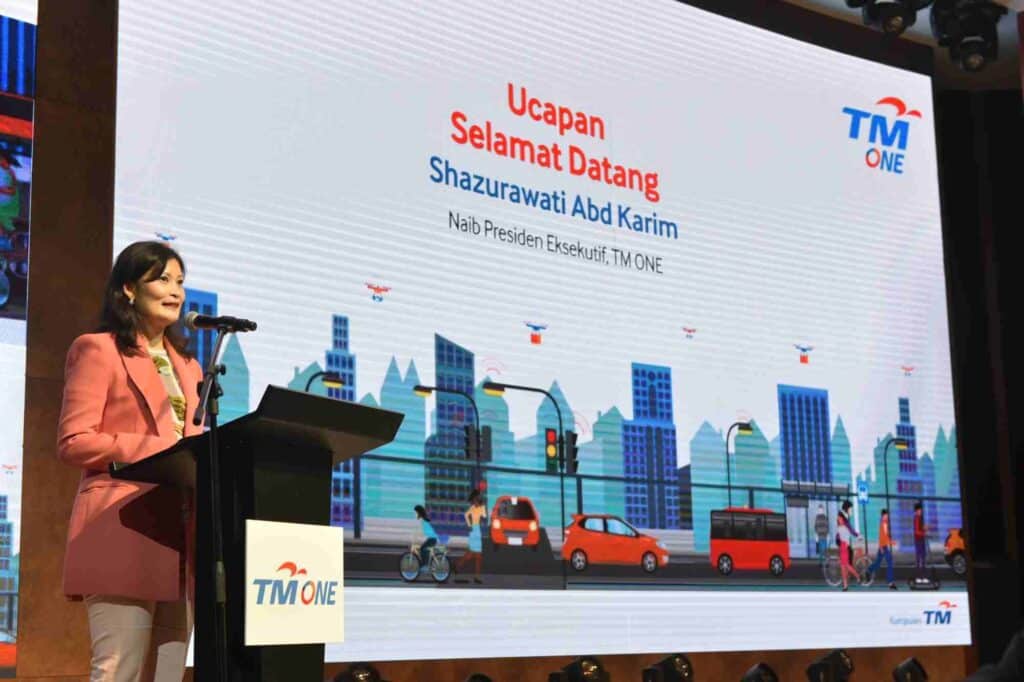
To date, we have made several initiatives with PBTs:
We are forging ahead, co-creating with PBTs on various digital services for the seamless use and benefit of the people and businesses. TM One remains a committed strategic partner to all PBTs in realising their aspirations toward becoming smart cities. Our objectives are clear – to implement the best-in-place integrated solutions that cater to each city and champion human-centred technology in accomplishing a “Liveable Malaysia”. TM One is the trusted partner who enable PBTs’ next advantage, today and tomorrow.
With technology advancing at its rapid pace, digital transformation has become a priority for many organisations, regardless of industry. Digital transformation is the process of using digital technologies to revolutionise existing, as well as non-digital business processes and services to create new ones in order to meet the market’s evolving needs.
Many businesses seek digital transformation for a number of reasons. Among them, having access to more in-depth data may equate to understanding customer insights better and, thus, having the ability to create a strategy that connects with them better. On top of that, there is also room for cost reduction as a result of time savings in operational processes.
Strategic partnerships may also be a strategy to employ when undergoing a digital transformation, as it allows different businesses to leverage and learn from each other in order to better meet any challenges the future may hold.
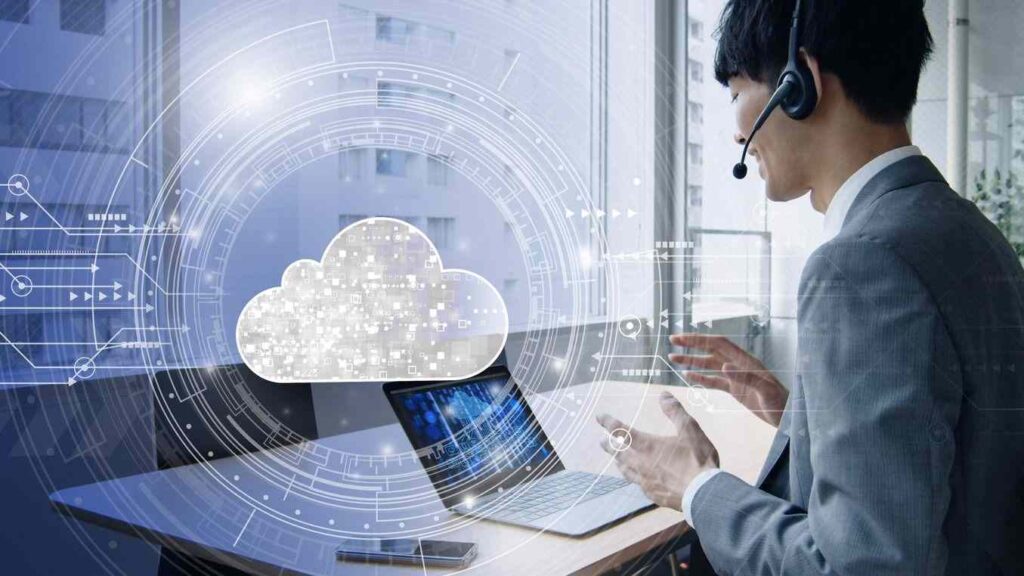
In March, Tune Protect, Huawei Malaysia, and TM announced an exciting new collaboration to re-platform Tune Protect’s existing General Insurance System (GIS) on Cloud via Huawei Malaysia and TM’s Cloud infrastructure, Cloud Alpha Edge. This significant shift signifies that Tune Protect is the first insurer in Malaysia to host its core insurance system on Cloud.
As part of the Cloud First strategy, the core system includes a collection of SAP HANA and SAP apps that will be comprehensively housed in TM Cloud Alpha Edge with full landing dependability and confidence.
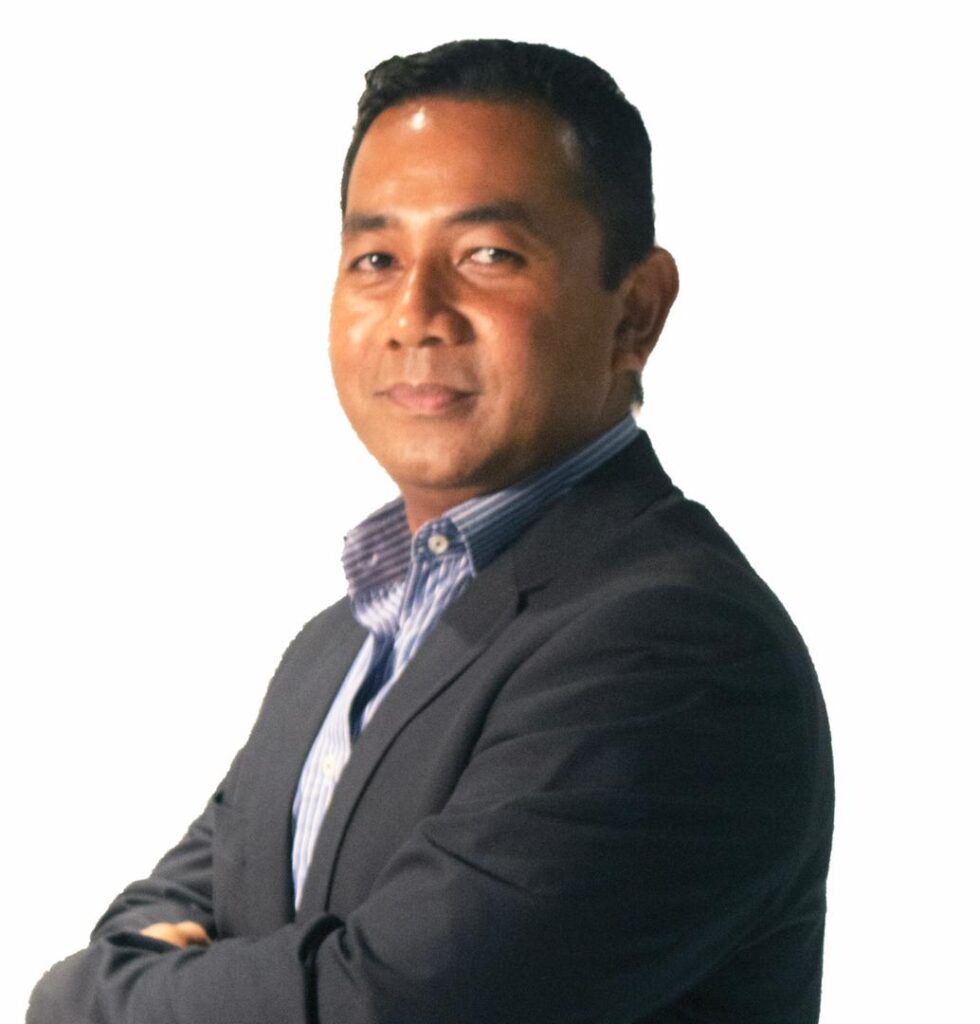
According to Muhammad Ghadaffi Bin Mohd Tairobi, TM One’s Vertical Director of Banking & Finance Sales, “TM One is committed in accelerating the digital transformation journey of our customers by helping them to provide the best digital experience to their end-users. This is particularly true in these times where digital transactions have increased exponentially. Tune Protect’s success in adopting Core System in Cloud Alpha Edge is a benchmark for all companies in the Banking, Finance and Insurance industry to embark on the public cloud journey confidently. Not limited to just cloud adoption, we provide end-to-end digital solutions for innovative product development while providing the best solutions and infrastructure such as cybersecurity and big data analytics enabling omni-channel, data monetisation agenda, leading to cost optimisation.”

Tune Protect, on the other hand, always had Cloud as the centrepiece of the digital transformation. Prasanta Roy, Group Chief Technology Officer of Tune Protectshares that having the SAP insurance core platform on Cloud helps to fast track innovation in their products and services, achieve speed-to-market, and provide differentiation in service to their customers. “Being the first insurer is a mere coincidence, but it has definitely the right step to set up the right foundation for technology transformation,” he adds
Besides being a product of two large scale companies, Cloud Alpha Edge has an array of unique distinctions to its name. To date, it is the only Malaysian-owned Hyperscaler Public Cloud that actively advocates data sovereignty.
To date, Cloud Alpha Edge is the only Malaysian-owned Hyperscaler Public Cloud that actively advocates data sovereignty.
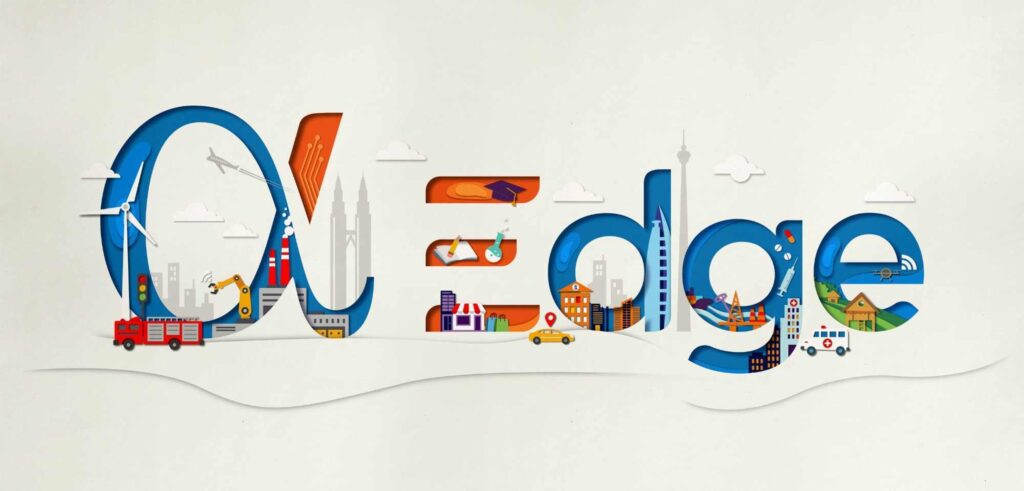
TM One is also the only local player with its own twin-core data centre, cloud infrastructure, with complete data residency and sovereignty. This infrastructure is strengthened through AI, and advanced cybersecurity solutions. This is especially suited for industries that are at high risk for cyber threats such as Public Sector and Healthcare. In fact, Cloud Alpha Edge already has multiple footprints in these industries, as well as Manufacturing.
With the rise of Insurtechs across the globe, it is quite evident that insurers will partner with various players in this space to bring in differentiation. Taking a closer look at data privacy, data residency and PDPA has to be taken into account. Tune Protect’s risk, governance/compliance and technology team worked together on all these aspects carefully while considering various public and private cloud options available within and outside of Malaysia. Cloud Alpha Edge came closest to meeting this need as the cloud data centres are based in Malaysia and customers are assured that their data remain preserved with the highest data sovereignty and confidentiality, as shared by Prasanta.
This also implies that data on the Cloud is stored in Malaysia rather than overseas, addressing the issue of data sovereignty. “They (Huawei Malaysia and TM One) are the right partner for Tune Protect based on all the considerations such as availability zones, SAP partnership with TM, and support availability around SAP from Cloud service provider,” explained Prasanta.

The working together between Tune Protect, Huawei Cloud, and TM One seek to improve a number of things. For one, Tune looks to support improvements in the area of speed-to-market, leveraging the agility and scalability of cloud services whilst also accommodating to the spike and decline of the market. In addition to that, enhanced customer experiences are also something they look forward to through improved IT productivity and a seamless user experience.
“As technology progresses and customers demand more personalisation, it is the right time for us to build the new SAP core system on Cloud to collaborate with other ecosystem partners to deliver a personalised experience for our customers in terms of product and claims,” continues Prasanta.
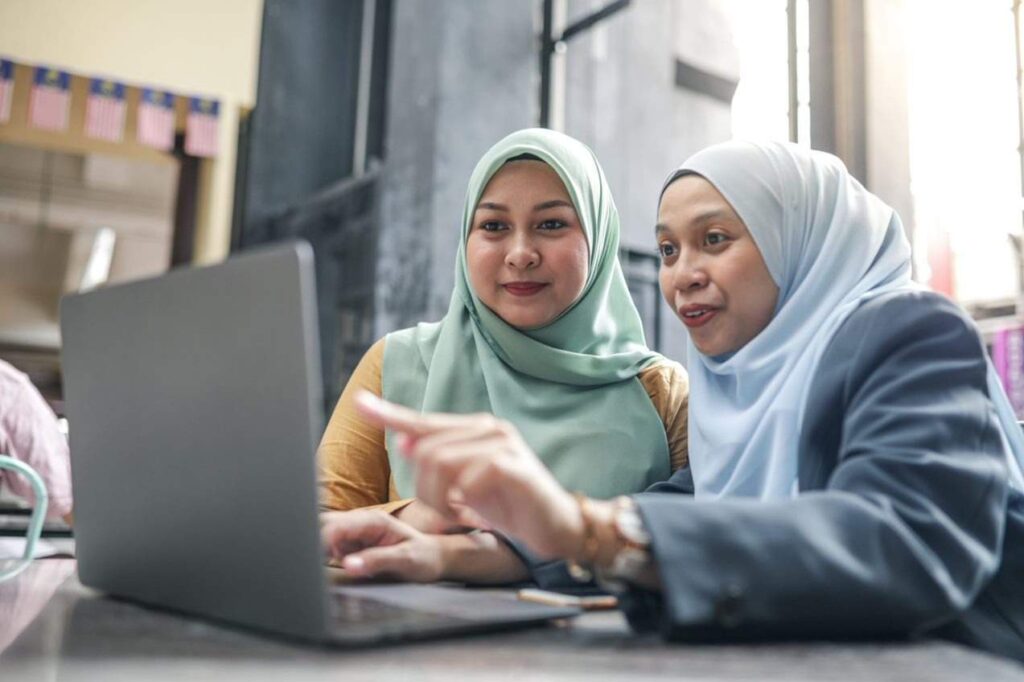
Not only will this partnership benefit existing and future users of Tune Protect, but the re-platforming also benefits company employees. With the presence of Cloud services like “racking and stacking” which can be completed by the Huawei or TM One team, this would free up the time of their internal technology team.
It’s only realistic for this transition to face its own set of unique challenges, such as converting the legacy on-premises software to Cloud-native. In preparation for any transitional friction the team may face, Tune Protect has lined up a mitigation plan that includes various Cloud certifications, online training, and on-the-job training for the respective team members to ensure a smooth and seamless process.
Prasanta also shared that the Infrastructure and Security teams will be upskilled so they are able to manage hybrid data centres, consisting of both on-premise and Cloud.
Migrating the critical systems to Cloud where on-premise hardware is nearing expiry would be next for Tune Protect, he adds. Consumers can look forward to new services such as health tech and other innovative solutions from Cloud that would enhance customer-centricity and experience as they aspire to grow more digital partnerships in the near future, in alignment with the overall Group’s business trajectory.

Huawei Malaysia believes that this collaboration is a strategic move that encourages data sovereignty in Malaysia, especially as no other public cloud service providers currently offer this, as mentioned by Lim Chee Siong, Vice President of the Cloud Business Unit at Huawei Malaysia. It marks a major breakthrough in FSI digitisation in Malaysia and Huawei Cloud also hopes they are able to help accelerate digital transformation in banks and insurance companies across the country.
The rise of digital banking and accelerated digital transformation have brought about new security concerns. Criminals are turning their attention to gullible online users, creating ever-so sophisticated scamming schemes to defraud them. At the enterprise level, threat actors are opportunistically using the shifting work environment to adopt tactics to infiltrate organisations.
Statistics1 from the Commercial Crime Investigation Department at the Royal Malaysia Police show that cybercrime is skyrocketing as consumers shift to online channels.
Between 2017 and June 20, 2021, Malaysians suffered losses amounting to about RM2.23 billion (US$533 million) from cybercrime frauds.
Of the 67,552 cybercrime cases reported during the period, e-commerce scams topped the chart with 23,011 cases. Meanwhile, complaints on online transactions surged 112% between 2019 and 2020, indicating that cybercriminals are looking to capitalise on the surge in e-commerce activity and rapid consumer adoption of digital financial solutions amid the new normal brought about by the COVID-19.
The pandemic forced consumers to turn to online retailers to buy groceries and e-wallets to pay their bills. A survey conducted2 by Kaspersky and research agency YouGov found that out of the 1,600+ respondents in Asia-Pacific (APAC) polled, 90% indicated having used mobile payment applications at least once in the past 12 months. Around 15% of the total survey respondents said they began using digital payment methods during the pandemic.
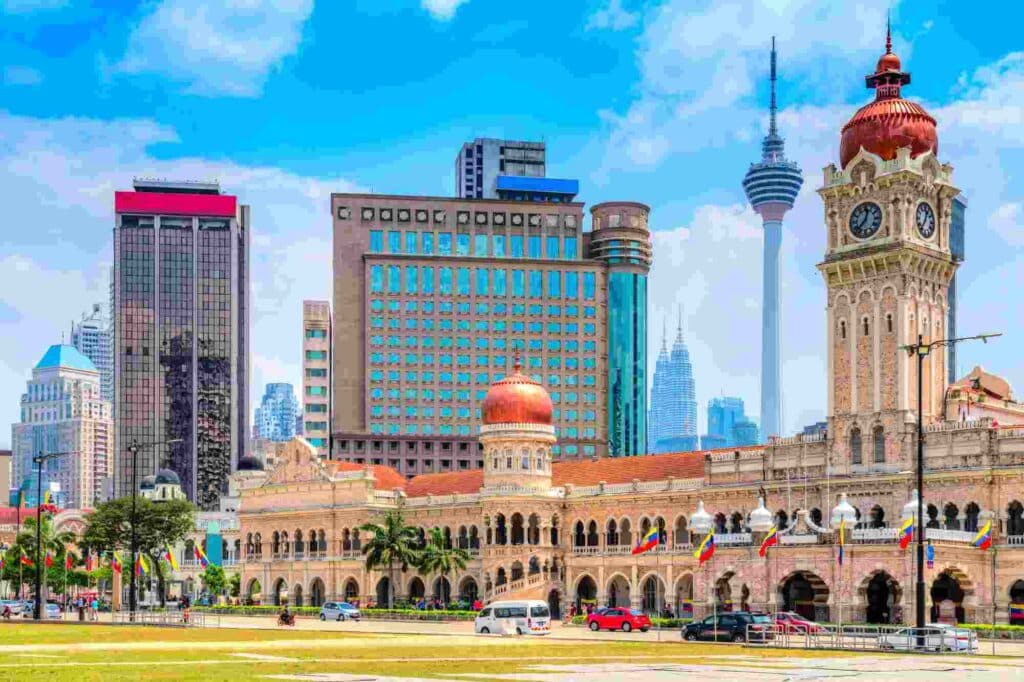
At the enterprise-level, cyber threats are exploding as well. The 2022 IBM Security X-Force Threat Intelligence Index, released3 last month, revealed that Asia has become the most attacked region globally, with over one in four cyber attacks recorded by the tech firm last year targeting users in the continent.
Asia saw more cyber attacks than any other region in the past year, the report says, with financial services and manufacturing organisations in particular experiencing nearly a combined 60% of attacks in Asia.
Server access attacks, where the attacker gains unauthorised access to a server, was the second-most common attack type observed, making up 11% of all incidents IBM’s X-Force IR team remediated in 2021. The majority of these attacks occurred in Asia, and in many cases the threat actors were successful in deploying malware or employing penetration testing tools on a server, the report indicates.
The pandemic has accelerated digital transformation and forced people to change the way they worked, transacted, and banked. This unprecedented speed of digital transformation is putting stress on banks’ IT systems, compromising real-time data analysis, and creating storage and security issues.
A recent survey4 of 305 global bank COOs and CTOs conducted by data-monitoring and management company - ITRS Group, found alarmingly weak operational resilience at financial institutions in the wake of COVID-19.
84% of respondents stated that their IT environment has changed more in the past 12 months than over their company’s lifespan, with digital transformation, work-from-home arrangements, cloud adoption, and more sophisticated security threats cited as the top drivers of change in banks’ IT environment. The figure stands even higher for APAC-based institutions where the velocity of IT change was found to be the greatest.
Globally, 79% of respondents indicated that it has become increasingly difficult for their institution to maintain their SLAs, or service-level agreements, with more than half stating that they suffered at least one business day of unplanned downtime every year.
Additionally, 94% stated that digital transformation has resulted in a significant increase in the volume of data, leading to challenges in analysing data in real-time (65%), storing data (62%), and difficulties in securing data (62%), creating a concerning trend.
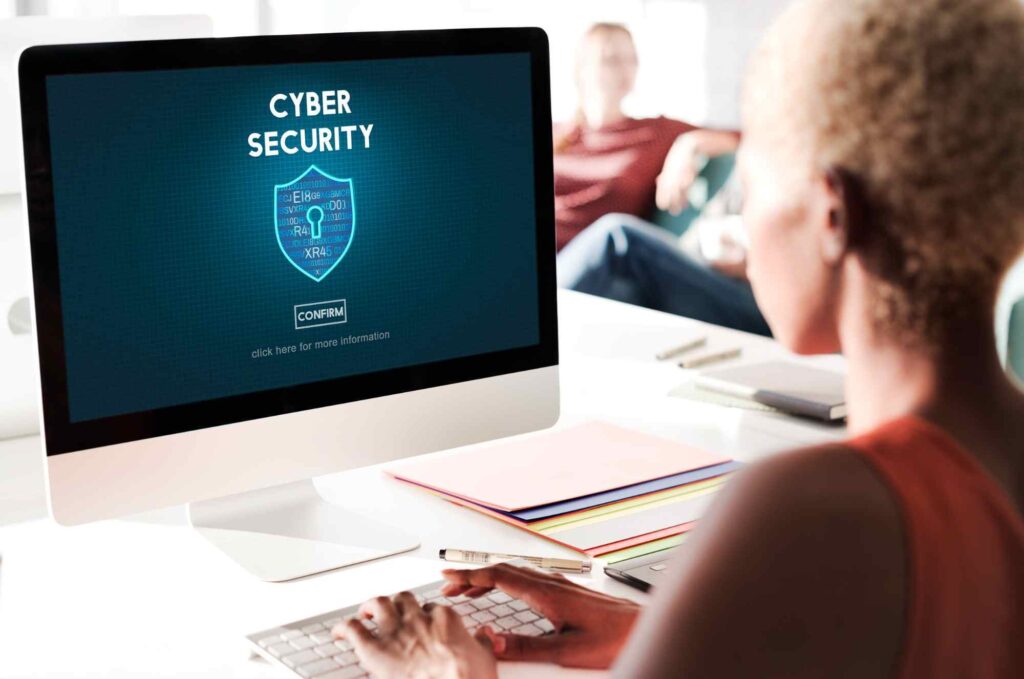
As more people rely on digital payments and get accustomed to digital services, awareness of cyber risks and crime is also on the rise.
In fact, security is becoming consumers’ top concern, with 67% of Southeast Asian respondents polled by Kaspersky and YouGov indicating that they hope for the implementation of one-time passwords (OTPs) through SMS for every transaction.
After OTPs, two-factor authentication was named the second most preferred security feature (57%), while 56% of respondents said biometric security features, like facial or fingerprint recognition, should be added for digital banking and e-wallets.
Going even further, a considerable proportion of consumers believe that financial services providers should play a bigger role in protecting their customers from being defrauded. In fact, 40% of respondents indicated that banks and mobile wallet companies should “start preventing frauds/scams automatically based on spending behavior and/or transfer history.”
With increasing international cooperation and the establishment of multiple task forces to trace ransomware gangs, Kaspersky experts believe the number of such attacks will decrease in 2022.
Instead, cybercriminals will turn to more advanced scams and social engineering as they seek to exploit human and system vulnerabilities. These scams will leverage all sorts of tools and channels, ranging from SMS and automated phone calls to messaging apps and social networks, and will be fueled by the availability of advanced technologies such as deepfake and voice synthesis, the experts said, quoted5 by Vietnam News.
In Thailand, nearly 40,000 people were scammed with their bank accounts and credit cards showing inexplicable transactions. In Malaysia, scammers used fake bank websites to steal customers banking details. And in Vietnam, criminals impersonated top e-commerce platforms to trick users into sending money.

Kaspersky experts predict a significant wave of attacks on cryptocurrency businesses, a trend that started in 2019 and which coincides with the beginning of the cryptocurrency market’s bull run.
Figures from blockchain data platform Chainalysis show6 that cryptocurrency-based crime, including scams, ransomware, and stolen funds, hit a new all-time high in 2021, with illicit addresses receiving US$14 billion over the course of the year, up 79% from RM32.91 billion (US$7.8 billion) in 2020.
Kaspersky experts said they have already witnessed advanced persistent threat (APT) groups rising to attack the cryptocurrency business aggressively, and they anticipate that this activity will continue as criminals increasingly exploit flawed security and resort to advanced techniques including manufacturing and retailing rogue devices with backdoors and social engineering campaigns to steal cryptocurrencies. Cryptocurrencies are particularly attractive to criminals, considering the anonymity they provide.
Southeast Asia could be more vulnerable than other countries, considering that consumers in these locations are known for being avid adopters of cryptocurrencies and non-fungible tokens (NFTs). Among 20 countries surveyed by Kaspersky, the Philippines was found to have the highest adopter rate of 32% of Filipinos indicating owning digital assets. This is followed by Thailand (26.2%), ranked second, then Malaysia (23.9%). Vietnam (17.4%) was fifth and Singapore (6.8%) 14th.

The urgency of addressing the relentless surge of cyber threats impacting both the public and business sectors is a fundamental step to enabling a sustainable, safe and successful digital society. As a key player in digital transformation for companies across industries, TM One's commitment to cybersecurity helps to create a safe and secure online environment for businesses and protect consumers from fraud and identity theft.
TM One has collaborated with CyberSecurity Malaysia, the national cybersecurity specialist agency, to elevate the nation’s cybersecurity network and ecosystem while strengthening Malaysia’s self-reliance in cyberspace.

“At TM One, we understand that new technologies are driving the accelerated digital transformation for many industries, allowing players to respond quickly to changes as well as provide customers with better digital experiences. Having a strong cybersecurity foundation will benefit Malaysian financial institutions not only mitigate cyber risk, but boost performance. Our Managed Security Services are designed to meet the specific needs of financial institutions and take their digital transformation forward to effectively improve operations, address compliance requirements, and enable open ecosystems,” said Muhammad Ghadaffi Mohd Tairobi, Director of Sales for Banking and Financial Services at TM One.
Do you know what are the key sources of cyber risk in Malaysia? Click here to download the infographics.
This article was first published by FinTech News Malaysia
References
1. https://www.nst.com.my/news/crime-courts/2021/07/708911/malaysians-suffered-rm223-billion-losses-cyber-crime-frauds
2. https://newsinfo.inquirer.net/1552270/threat-awareness-high-as-digital-banking-users-list-preferred-security-steps
3. https://www.ibm.com/downloads/cas/ADLMYLAZ
4. https://www.itrsgroup.com/a-global-operational-resilience-survey
5. https://vietnamnews.vn/economy/1141324/advanced-scams-data-breaches-crypto-and-nft-attacks-imminent-in-southeast-asia-kaspersky.html
6. https://blog.chainalysis.com/reports/2022-crypto-crime-report-introduction/
7. https://www.tmone.com.my/solutions/cybersecurity-services/bfsi-infographic/?utm_medium=cybersecuritypage&utm_source=TMONE&utm_campaign=CYDEC
The city of Ipoh has been recognised as one of the most attractive destinations in Asia to visit. The Ipoh City Council (MBI) has mapped out the Ipoh Smart City 2030 aspirations to create a more livable city that is able to address various urban challenges and places it at par with other global smart cities.
Find out how MBI, in collaboration with TM One, realises the aspiration towards a smarter Ipoh!
To learn more about TM One's smart services, Contact us here.
According to Telekom Malaysia's enterprise and public sector solutions arm TM One,1 Malaysia's economic resurgence in the post-pandemic world will greatly benefit by adopting a human-centred approach to digital transformation, especially amid a tsunami of rapidly advancing technologies.
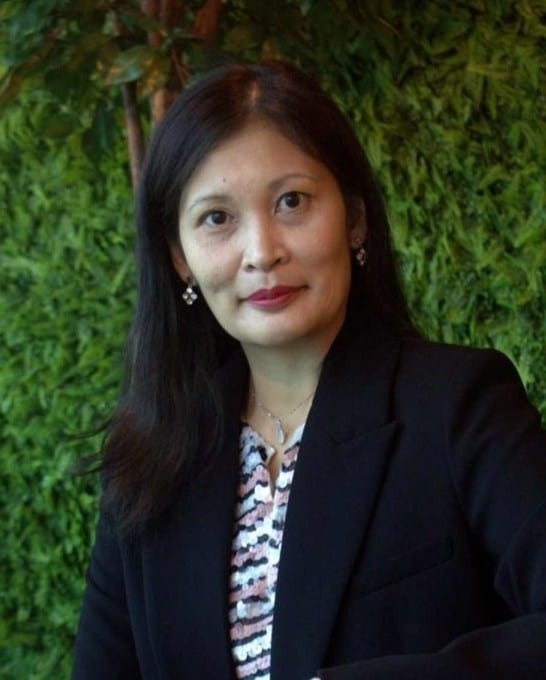
In an in-depth Disruptive.Asia 2022 outlook interview with Shazurawati Abd Karim, who as Executive Vice President is at the helm of TM One, said that the company's people first approach has invigorated much of TM One's aims to sensitively contribute to the growth of Digital Malaysia.
Last year, the nation's digital aspirations saw fresh impetus from MyDIGITAL 2 and expectations from a government-driven 5G rollout are high. According to the Chinese calendar, 2022 is the Year of the Tiger, and various industry leaders have already sounded the roar towards rapid recovery.
Shazurawati agrees that in common with the global experience, Malaysia's recovery efforts in 2021 were hampered by challenges related largely to new strains of COVID-19. Although the year, which was widely envisioned by many pundits as the year of recovery, did not transpire as hoped, TM One still managed to achieve several significant breakthroughs, and is well positioned to deliver on several digital nation building fronts, she said. "On reflection, we planned 2021 as the year of recovery; unfortunately, in common with the rest of the world, we found that COVID-19 continued to peak, which meant that the MCOs (movement control orders) and other challenges slowed down forward movement."
TM One's focus on catalysing Malaysia's business and government sectors has seen the joining together of important pieces of the jigsaw, she said.
"By the end of the 2021, we made many positive advances: We are happy to have continued to support our customers, the public and the government. From a business perspective, our performance of driving cloud adoption in 2021 has been phenomenal from a year-on-year growth perspective," she said, and detailed some of these milestones, which are summarised below.
"One defining moment is when we enhanced the capabilities of α Edge (Cloud Alpha) 3 with AI last year - thus becoming an Intelligent Industry Cloud Platform, with full stack hyperscaler capabilities hosted at TM One's Tier-III Data Centre in Malaysia. This is Malaysia's only hyperscaler cloud with end to end services, which meet local, residency and sovereignty data requirements as well as AI-capabilities that comply with the highest industry standards ."
This prepared the ground for another defining moment when TM was appointed by the government as the only local Cloud Service Provider (CSP)4 to play a pivotal role within the MyDIGITAL initiative to support Government agencies' digital transformation journey. 5
Announced in early 2020, MyDIGITAL is the country's 10-year bid to vitalise its digital economy trajectory, the objectives of which include boosting digital economy contributions to 22.6% of national gross domestic product (GDP) by 2025 as well as opening up 500,000 new job opportunities.
On the commercial front, Shazurawati said that the end-to-end cloud solution has bolstered businesses operations by offering an array of much-needed benefits future-fit organisations: artificial intelligence capabilities to support all types of business innovation; machine learning (ML) functionalities to deliver actionable insights at greater speeds; edge computing to process data close to collection points; resource monitoring tools for identity and access management; advanced security tools and cybersecurity support to enable continuous real-time visibility and predictive protection.
"As well as providing peace of mind to organisations when hosting critical applications and classified data, industry verticals across the board were in a better position to boost their productivity and performance especially during these challenging times," she continued.
"Some other defining moments for us in 2021 was the continued broadening of our services beyond Malaysia, when a leading global provider of smart devices, HONOR adopted TM One Cloud solutions to serve its customers across three continents 6 - Asia, Africa and Latin America."
Some other cited examples included the Ministry of Education's use of α Edge to host its platform, enabling the simultaneous processing of large number of queries (such as exam results) – 15.4 mil queries, with 8.3 mil queries during peak hour.
Shazurawati also recalled other instances such as some collaborations with top Malaysian banks that used secured digital solutions and infrastructure to enrich their digital financial services and upscale digital banking adoption.
In addition, the provisioning of end to end managed network and security services across the industry verticals remain steadfast.
Shazurawati also pointed to TM’s role of forging strong relationships with global telco and content partners to strengthen Malaysia’s position on the global front as a preferred digital destination and business hub.
“We are very proud of another defining moment for our cloud services in 2021 - we made a big leap forward in cybersecurity and also with partnerships with some of the global telcos such as Telefonica, 7 for example."
TM One accrued a long record of distinction, including the latest array of records such as:
"So 2021 was indeed a year of fortifying our building blocks of connectivity, cloud services, smart services and on bringing these benefits to more people," she said, before turning to deeper strategic drivers.
IDC ASEAN Senior Research Manager for ASEAN recently noted that organisations in the region are striving to both innovate and generate revenue from digital products and services and to also be part of the ever-growing and evolving industry ecosystems. “We will see more and more ASEAN enterprises of the future forging partnerships and collaboration with ecosystem players to derive value from shared data, applications, and operations initiatives. This will only lead to the birth of innovative products, services as well as better engagement and experience for customers.”
IDC's top two ASEAN predictions for 2022 9 are underpinned by the rise of all things digital:
Indeed, the speed of transformation around the world is constrained by talent and skills' gaps, resistance to change and of course connectivity infrastructure concerns. The challenge of managing and unlocking value from the ongoing explosion of data in a digitalised economy also requires a greater commitment to inclusivity of people.
In the recent signing of a memorandum of agreement by OECD (Organisation for Economic Co-operation and Development) Secretary General Mathias Cormann and ASEAN Secretary General Dato Lim Jock Hoi , 10 the objectives include promoting and accelerating digitalisation with an emphasis on driving infrastructures that include peoples, regions and businesses.
Shazurawati further explained that TM One is working closely with the regulator MCMC (Malaysian Communications and Multimedia Commission) and other government entities to help open up digital training for people across the nation to take up digital economy opportunities.
“Formerly known as Internet Community Centres, we have supported MCMC transformed these into Digital Community Centres. In addition to internet broadband connections, people can now go to learn about becoming ‘digital enterprises’ - and we help them connect to logistics providers, obtaining grants, and to use collaboration, marketing and digital tools necessary to participate in the digital economy. These are part of TM’s role to improve the country’s digital connectivity through enhanced broadband coverage and quality to homes and businesses."
TM One has continued to reiterate its role is to provide end-to-end robust and secure digital solutions to harness the power of IR 4.0, AI, Big Data and IoT, to enable national digital adoption, Shazurawati further explained.
“These initiatives are aligned to the government programmes such as Jalinan Digital Negara (JENDELA11) – which focuses providing wider coverage and better quality of broadband experience for the people, whilst preparing the country for 5G technology," said Shazurawati.
"To tackle the pandemic, we have been providing the internet coverage and PPEs [personal protective equipment] for frontliners at PPVs (vaccination centres), supporting CPRC/CRC (Crisis Preparedness and Response Centre) implementation,12 and the Covid-19 Volunteer Program - ‘Greater Klang Valley Task Force’ initiative."
With an emphasis on efficient data handling, TM One is committed to working closely with all the key essential services relating to the Ministry of Health, among other programmes. "We came in very strong and very quickly to digitally support the Task Force with their essential tasks for the citizens and are working closely with the Ministry."
And what of the near future? There is a trend of stabilisation - one of IDC’s 2022 predictions spotlights ‘scaling with knowledge’ and foresees that 25% of large enterprises will see 20% improvement in information usage by 2026 due to investments in intelligent knowledge networks to turn structured/unstructured data into findable and actionable knowledge.
Another of its predictions predicates that an evidence-based culture is ‘paramount for digital-first enterprises: By 2026, 20% of organisations will use forms of behavioural economics and AI/ML-driven insights to nudge employees' actions leading to a 60% increase in desired outcomes.
Other IDC expectations stress that digital infrastructure is at the core of future enterprises: By 2025, a 6X explosion in high dependency workloads leads to 65% of ASEAN top 500 companies using consistent architectural governance frameworks to ensure compliance reporting and audit of their infrastructure.
Technology is a key tool to build sustainable growth, she said. This echoes is being enabled through the direct and indirect effects of the application of digital technologies and techniques on organisational and economic conditions on the one hand and new products and services on the other.
Meanwhile, speaking of the business value of IT, IDC concurs that by 2024, digital-first enterprises will enable empathetic customer experiences and resilient operating models by shifting 50% of all tech and services spending to 'as-a-service' and outcomes-centric models.
"We are fully aware when that Digital Services' market consumption is almost three times more than the basic levels of communication and connectivity consumption," she noted, adding that the company is probing further value propositions, capabilities and capacities to benefit verticals' evolution into transformation and automation.
Shazurawati also affirmed that smart services will be catalysed by the nation’s 5G rollout, which will help improve the economics of scales of Malaysia, and taps ongoing mobility trends in Malaysia and across the region.
Just one impact from COVID-19 during the last two years is the amplification of mobile- or remote-driven digitalisation of the global economy, with Asia, as noted earlier emerging as a high potential growth area.
“Essentially, we are already working as if In the endemic phase to a great extent and are back in the office 60% and have adopted a hybrid working model," commented Shazurawati. "For this year, our ambition includes growing mobile. We are excited about putting more focus on mobile enterprise."
Building on what she recently commented in detail about 5G opening a new era for the industry in December 2021,13 she adds that the concept of smart cities presents a practical path and model for actualising the real benefits to people and the economy of 5G. "Smart communities will become key growth engines and beneficiaries of 5G. Global spending on smart city solutions is expected to reach US$2.5 trillion by the year 2026. Smart cities essentially involve using sensors based on IoT, which will generate large amounts of data. 5G will provide higher speeds and more capacity to handle data coming in from multiple devices such as sensors, cameras, cell phones and other sources."
When looking ahead, one of the most striking findings to bear in mind was posited by Google, Temasek, and Bain & Company's recent e-Conomy SEA 2021 Report,14 which declared that 40 million new internet users had come online in 2021, and ramped up the internet penetration in Southeast Asia (SEA) to an impressive 75%.
Within this dynamic, Malaysia's internet economy has rebounded strongly. Bain's analysis found that the country's 2021 gross merchandise value (GMV) reached a 47% year-on-year surge and is expected to hit a total value of $21 billion. With a strong 68% eCommerce growth, Malaysia’s overall internet sector saw a rebound of double-digit year-on-year growth and is expected to reach $35 billion in 2025.
Connectivity infrastructure and smart services are quietly enabling this digital economy growth, which includes digital financial services, along with food, transport and logistics and so forth. Shazurawati went on to detail TM One's work across multiple verticals - touching on manufacturing, education, and healthcare examples.
"Smart Manufacturing is gaining traction," she remarked. "And we have seen a heightening of activity in education with the private education sector ramping up cloud adoption to drive hybrid learning - another buzzword from the pandemic phase. Hybrid learning has embarked on an exciting journey, which is in tandem with increased digitalisation of healthcare."
Shazurawati said many collaborative initiatives are under discussion in several verticals. "We are seeing more resolve when it comes to enabling data sharing; and this is in response to the public's expectations for more seamless, better service levels - for instance, individual patient care across a group of hospitals."
"Local councils are also adopting smart services as a pathway to address the challenges of improving productivity and services in highly competitive times, enhancing safety and security, reducing accidents at work, the need to automate certain operations and so deploy staff to higher value work, etc."
Shazurawati said there are many use cases of digital adoption by local authorities and government with many more to come.
"The bottom line is that the more we can serve, the happier the people will become, and generate even better service levels, which contributes to a better bottom line at the same time. Within public sector, we see a desire and ambition to do advance this."
Speaking of TM One, she said the company culture has ramped the momentum of nurturing a high performance future workforce through upskilling and re-skilling programmes and growing current subject matter experts.
"TM One and the Group is digitising business processes and introducing tools and apps to deliver more robust and efficient execution," she said, adding that Environmental, Social and Governance (ESG) is becoming foundational in managing relationships with employees, suppliers, customers, and the surrounding communities.
On a broader level, she holds that: “Malaysians are absolutely resilient, and have a youthful mindset, which helps us embrace changes quite well. For example, we saw how in the recent flood crises, how tough people were, and how when faced by challenges, people came together to help: so this bodes well for the future."
“Everybody has learned much of what works and what we all will need to work in the near future. We are moving in the right direction and there is a desire and growing commitment across all sectors to move forward and be better."
“This is encouraging for us especially as we just at the beginning of the new year, and we are in the midst of many collaborative initiatives, and co-creation discussions," she adds.
"Much of the motivation among leadership conversations in Malaysia is naturally driven on solving challenges: How can we do this better? For example, precise agriculture (in farming), I saw recently we are cultivating a fish (not native to Malaysia) that produces caviar. Modern farming with technologically controlled environments demonstrate that location is no longer an issue," she said. "In addition, I truly believe that for us to really move for forward and deliver sustainable, impactful outcomes depends on cooperation and collaboration, and unlocking the talents within us all."
Malaysia has an enormous opportunity to recover lost ground during the pandemic years, and to accelerate its development as a digital nation.
"Our focus is to put forth a people-first approach to digital transformation via human-centred technology – serving the digital needs of the people and focusing on the usability benefits," she said, adding that this translates into developing digital solutions that make customers’ lives and jobs better and driving more digitalised ways of working within TM One.
"We will continue to invest in our people, infrastructure and technology to be ready for the next wave of innovation, in order to deliver delightful customer experience."
Shazurawati concluded that digitalisation will continue to accelerate in the post-pandemic era. "Many projects were put on hold last year because of uncertainty about how to advance these. Businesses are now more convinced and have the appetite and information to move forward. I am happy with the momentum thus far and believe we will continue to move forward as a whole this year."
"In this year of the Tiger, we are set to roar ahead on all fronts! We will continue to adapt agilely. and sharpen our digital and service capabilities to strengthen our value as partners and moving forwards beyond recovery and accelerated growth."
URL LINKS :
myNEWS is one of TM One's many existing customers that has successfully integrated TM One SD-WAN services into their business.
With TM One SD-WAN, they can now leverage secure and seamless connectivity to their remote branches which also helps to optimise their IT team's productivity. myNEWS is enjoying new features which enable cashless transactions and in return increase customer spending in its stores nationwide.
Watch this video and know more about myNEWS' journey towards greatness, enabled by TM One SD-WAN.
To learn more about TM One's connectivity services, Contact us here.